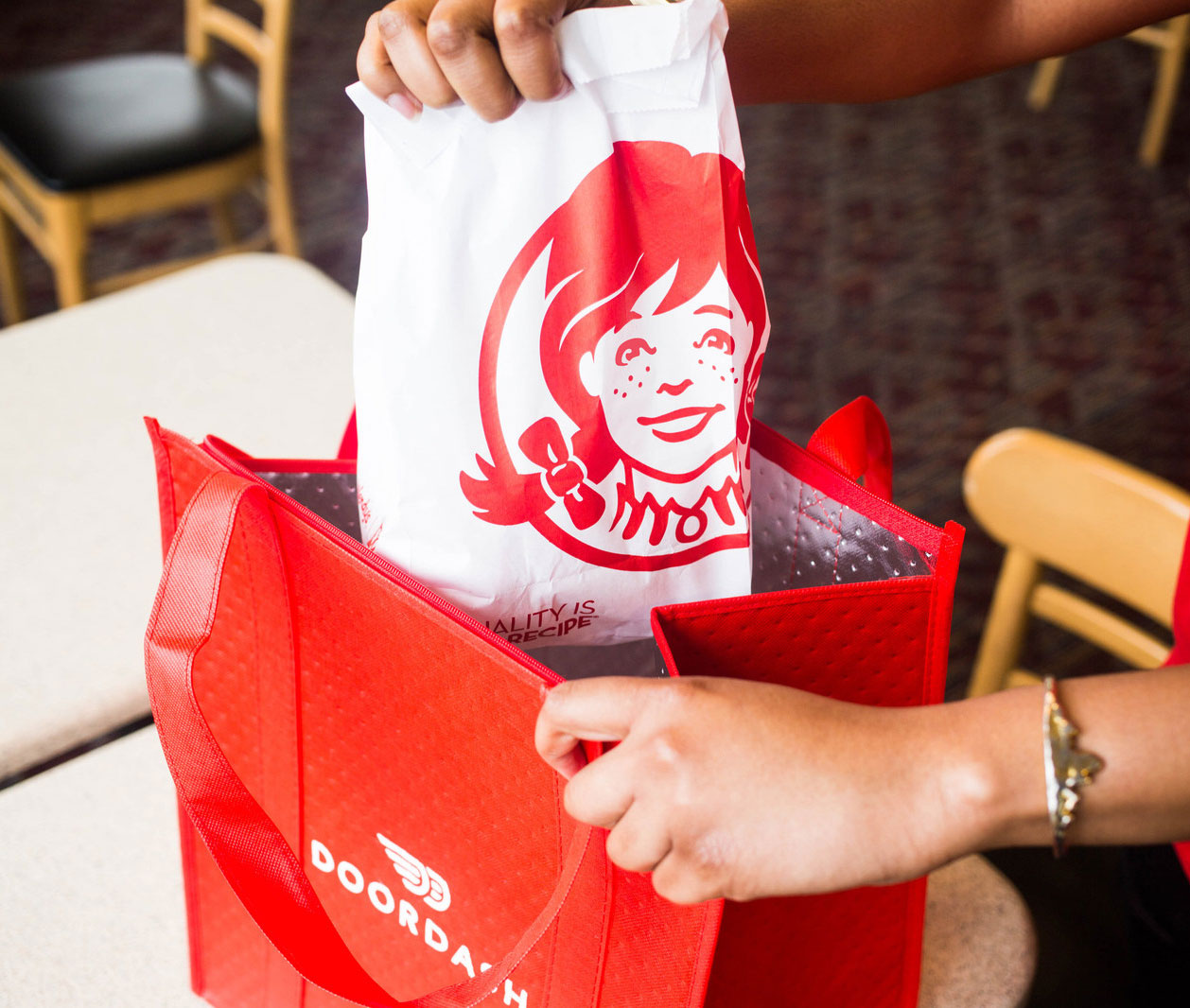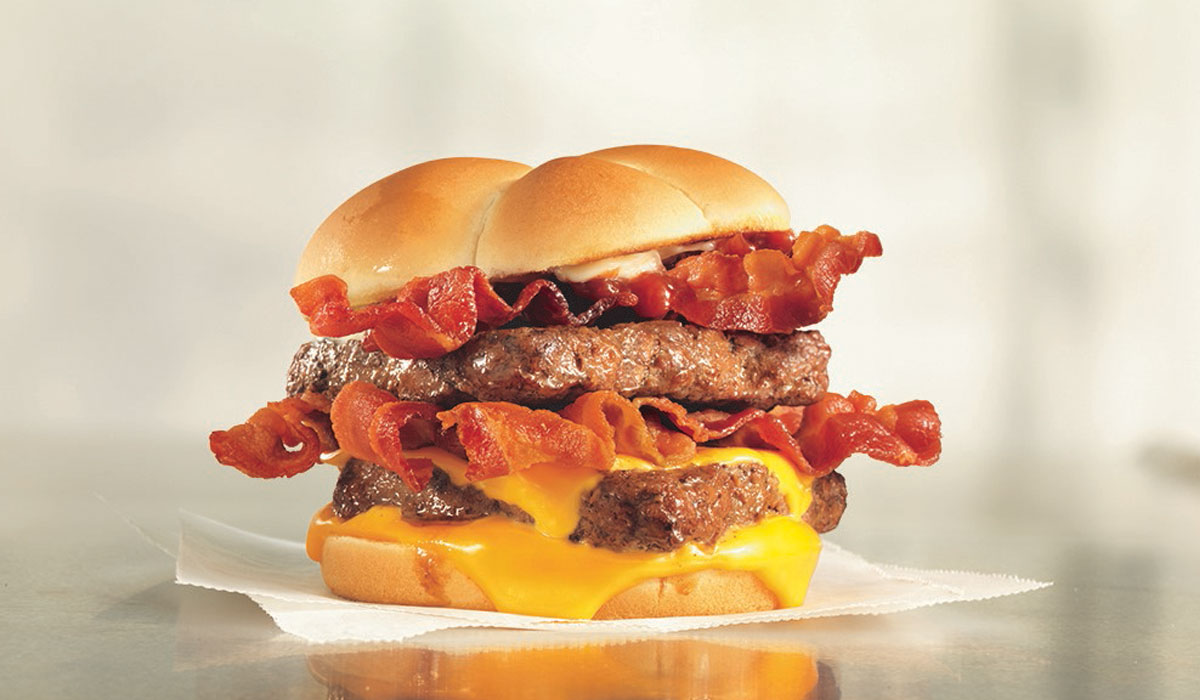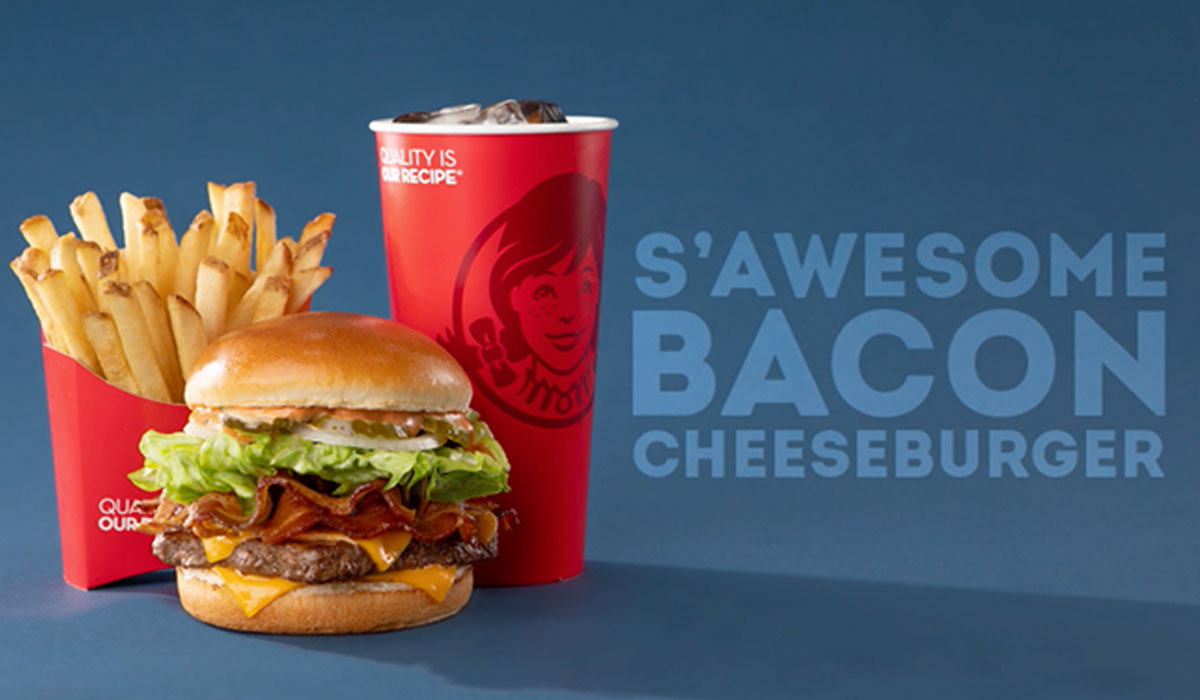Wendy’s back-ended 2018 with news it would invest an incremental $25 million into digital. That, along with lower mix benefit in its menu, and the need to turn promotional-based traffic into trade-ups, wrote much of the burger chain’s story this past year. A swift turnaround on both fronts helped Wendy’s begin fiscal 2019 with a Wall Street-busting quarter. The company’s positive run was also accompanied by a shift to its leadership structure.
Wendy’s announced Tuesday it created two new positions: a president, U.S. and chief commercial officer role; and a president, international and chief development officer position.
Kurt Kane, who has worked at Wendy’s since 2015, serving primarily as chief concept and marketing officer (he was promoted to EVP in 2018), will take that first title and assume responsibilities for the entire U.S. business, including operations, marketing, and research and development. He will also lead Wendy’s digital experience organization.
Abigail Pringle, Wendy’s chief global development officer, and a company vet since 2002, was promoted to the other spot. She will continue to lead the brand’s international business, which now includes Canada, as well as Wendy’s global development organization.
Bob Wright, EVP and COO, is leaving the company after five years at the end of May.
Wendy’s CEO Todd Penegor said during Tuesday’s conference call that the new structure will “increase our effectiveness by driving clear accountabilities for our growth across the organization.”
The burger brand reported North America same-store sales growth of 1.3 percent in the quarter, building off last year’s 1.6 percent figure. Total revenue rose 7.4 percent to $408.6 million, beating analyst expectations of $399.8 million. The figure was lifted by a 4 percent rise in franchise royalties and a 17 percent bump in rent. Profit margins at restaurants run by the company also hiked 15 percent versus a 13.9 percent jump a year earlier.

Refreshed offerings that resonate
Here’s a question Wendy’s has faced lately: Are guests willing to embrace the $5 price point over the chain’s No. 1 and most-recognizable platform—the 4 for $4?
Some of the largest players in quick service are driving traffic through discounting on premium-end products right now. Penegor said Wendy’s isn’t one of them. The company has its core business and everyday prices, as usual: coupons, mobile offers, and other promotions that drive traffic. But the main difference, Penegor said, is Wendy’s continues to work on menu architecture designed for guests to climb the value ladder. No matter the occasion. In recent quarters, Wendy’s lost share on the dollar front, meaning it didn’t do as good a job trading customers on once they decided to traffic the restaurant. Essentially, they came in for the deals and left after individual purchases.
Wendy’s changed that in Q1 by mainly launching platforms over products, and deals that have legs when it comes to future innovation. Additionally, they fit right into Wendy’s marketing wheelhouse. They also happen to circle the $5 price point over the $4 one, which aided check.
Wendy’s unveiled the combo offer $5 Biggie Bag, $5 Giant Junior Bacon Cheeseburger, and a Made to Crave menu that skews higher, with options, like the S’Awesome Bacon Cheeseburger, running roughly $5.29.
Penegor said the Biggie Bag wasn’t just a nice check builder—it drove incremental traffic in Q1. So this was a deal that struck two chords of Wendy’s menu goals and bridged the barbell promise: Not just higher prices to move the top-line, but also traffic you’d typically see from a lower-priced LTO.
What’s also happened is Wendy’s now has three platforms to pulse news into. The Biggie Bag can change products and price points. It’s not locked in. The company can innovate around the branding more than the current offerings.
On the Made to Crave lineup, Wendy’s just added three new chicken sandwiches to the offerings, including one with avocado and bacon. Penegor said that brought just one new SKU in, “so we’ll be able to continue to trade folks up on the top on that, but we’re keeping the balance.”
The strategy is key to Wendy’s comps growth during a calendar year it expects traffic on a full-year basis to be flat to slightly down—that coming off 13 consecutive quarters of holding or growing category share. Wendy’s will see more benefit from price than transactions this year. So it’s critical to build a balanced high-low strategy that doesn’t rely solely on deep value for visits. “We brought a lot of folks in,” Penegor said. “Now, we’ve got to continue to trade folks up. That’s healthy for our margin and it trades folks up into some of our best offerings on our menu.”
To put it simply, Wendy’s needs platforms it can refresh and count on, and it believes it’s hit with Q1’s standouts.
“We still have headwinds for many Americans. Income growth is not equally distributed. Healthcare and housing and rent costs continue to increase and wage growth has not quite kept up with inflation. But the good news is consumer confidence is trending favorable. Disposable income, which [correlates] to our business is moving in the right direction. And we have continued low employment and steady wage growth.” — Todd Penegor, Wendy’s CEO.
The Biggie Bag gives customers a chance to move from the 4 for $4 into a full-meal offer that’s still affordable. The first iteration included a Bacon Double Stack, 4-piece chicken nuggets, small fries, and a small drink.
The Made to Crave section is variety driven, which helps accelerate frequency over time, Penegor said. And it introduces customers to Wendy’s premium offerings. Wendy’s discontinued chicken tenders when it introduced the platform. They were slowing down the drive thru and not selling enough to satisfy operational ROI.
On Thursday, Wendy’s brought back its 50-cent Frosty deal. Penegor said it would drive traffic, as it typically does, but also get customers into the door to trade up. There’s a Frosty Cookie Sundae available on the higher-end if guests want a more indulgent option.
The industry’s traffic slide
Regarding traffic in general, which has tracked mostly negative industry-wide, with price increases accounting for sales lifts, Penegor said, “there are some signs of life in [quick-service].”
He said traffic is moving from flat to up slightly for most brands.
“We still have headwinds for many Americans,” he said. “Income growth is not equally distributed. Healthcare and housing and rent costs continue to increase and wage growth has not quite kept up with inflation. But the good news is consumer confidence is trending favorable. Disposable income, which [correlates] to our business is moving in the right direction. And we have continued low employment and steady wage growth.”
“So those should all be good trends for our business.”
This flat to 1 percent traffic reality is creating a fierce share-of-stomach battle for quick-service operators. Penegor said brands need to play the barbell strategy because there is a bifurcation of consumer health. Meaning, restaurants must keep offers on the low side, yet still have good menu architecture to move customers form low to high and trade them up, and provide opportunities on the premium side.
“The deep, deep discounting that we saw in the back half of last year has subsided to some extent, but it’s still very competitive out there and it always will be,” Penegor said. “And that’s why we got to continue to not only figure out ways to drive and grow our business faster by connecting to the consumer better, but we got to continue to drive the productivity initiatives and the margin enhancement initiatives.”

Where are the digital investments going?
Wendy’s $25 million investment was broken into two parts: a $15 million investment in consulting company Accenture, and $10 million on digital scanning equipment that will improve throughput and unlock consumer insights and digital initiatives Wendy’s can leverage moving forward.
On the latter, Wendy’s said it landed on a vendor and hopes to complete the rollout by year’s end. CFO Gunter Plosch said franchisees are “delighted” about the equipment, partly because the company is paying for it. And they can’t get them in stores quickly enough.
“Teams are working well together,” Plosch added on the Accenture deal. “We have already improved our mobile apps so customer ratings on these apps have actually increased.”
At the end of Q1, about 75 percent of Wendy’s North America restaurants were on a delivery platform—up roughly 15 percentage points since the end of 2018. The company is on track to cover 80 percent of the system by year’s end.
Meanwhile, Wendy’s is working to integrate delivery into its app. That process is expected to finish before 2019 closes as well. In addition to a more seamless user experience, the change will provide Wendy’s with customer insights it can examine to adjust its efforts.
Mobile ordering is live in 75 percent of the U.S. system too, with the same timeline for completion as the other digital initiatives. “It is critical to have scale in order to create awareness and we plan to start doing that later this year,” Penegor said.
Regarding delivery, integrating into its app will allow Wendy’s to flex in other providers. Currently it’s exclusive with DoorDash as a partner but “we’ll have opportunities to play that game differently as things change into the future,” Penegor said. Wendy’s is on annual contracts with its partners (SkipTheDishes delivers in Canada). Penegor added Wendy’s is positioned for change, “if we need to make it.” But also to “continue the status quo if that’s the best thing for the business.”
Still, the major opportunity is simply getting the word out. “Awareness is really quite low on the delivery front,” he said. “And we’re in those early innings, and we’ll continue to drive awareness throughout the year.”
Delivery remains a very small percentage of Wendy’s transactions, Penegor added. It’s driving sales in the dinner and late-night dayparts. Customer satisfaction scores have been solid to date and the business is proving incremental. “We feel good and encouraged this can be a growth driver,” he said.
Plosch added a note on kiosks, which are in about two-thirds of Wendy’s units. He said franchisee adoption has been “fairly slow.”
“We are seeing benefits and we are trying to convince the rest of the system to actually make the capital investment because we think it has a return,” he said.
“We believe that being successful in digital will be a competitive advantage for us as consumers are craving customization, speed and convenience, all of which can be enhanced through our platforms,” added Penegor.










